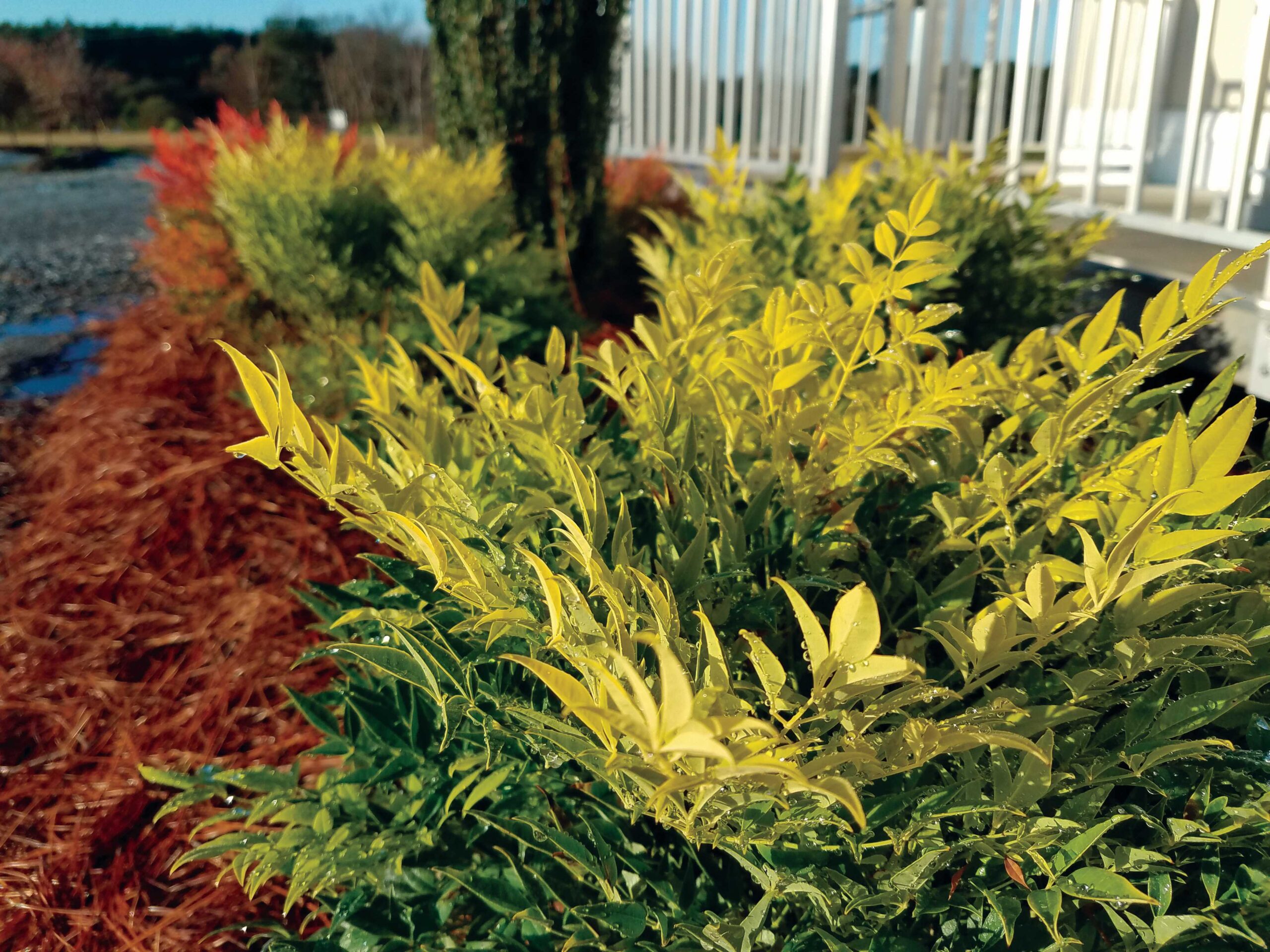With new cultivars in the works and year-round coloring, Nandina has taken root.
By Jon Bell
They can be a fiery red, a pretty pink or a deep, dark burgundy. Some are golden or amber depending on the season, while others nearly glow in soft peach tones. For home gardeners looking for seasonal variation and year-round color, it’s the perfect plant.
One of Nandina’s most attractive traits is that it offers year-round color, whether it’s the milder greens of spring and summer or more vibrant hues present in the late fall and winter.
“They look good year-round,” said Jim Simnitt, co-owner of wholesale growers Simnitt Nursery (Canby, Oregon), which grows five different varieties of Nandina. “They show color change, some of them have berries so they add interest, and they’re not deciduous, so they don’t go away in the fall and turn to sticks.”
A good luck plant
Native to China and Japan, Nandina made its way to Europe and North America by way of introduction in the early 1800s. According to information from the University of Arizona’s Campus Arboretum, it was named by Swedish naturalist Carl Peter Thunberg in 1781, who named it after nanten, the common Japanese name, which means southern sky.
The Japanese word also has the same pronunciation as the word meaning “problems that turn for the better,” which has given Nandina an association with good luck.
Though its common name refers to it as a bamboo, Nandina is similar to bamboo only in appearance. In reality, it is a broadleaf evergreen shrub that can grow to between 2 and 4 feet wide and 6 to 8 feet tall. They are hardy from zone 6 to 9 in North America and are ideal for foundation and mass plantings.
The attractive shrub is ideal for a wide range of uses, as well as being versatile in the garden and happy in full sun to partial shade, said Cindy Ferguson, a certified production horticulturalist for wholesaler Sidhu & Sons Nursery, which is located outside of Vancouver, British Columbia, Canada.
“Nandina is a staple in many plantings, as its new flush of foliage in the spring stands out and the showy fall and winter foliage allows this evergreen to stand out during the drab winter months,” Ferguson said.
And while Nandina prefers slightly acid soil, it’s easy to grow, will tolerate most growing conditions and requires little pruning or maintenance.
“Heavenly bamboo is an excellent specimen or accent plant,” Ferguson said. “It works well by adding height to container plantings. It also makes an eye-catching border or small hedge. The finely textured leaves set it apart from other trees and shrubs. It’s also sought after for city or urban plantings, as it’s tolerant of drought and urban conditions once established.”
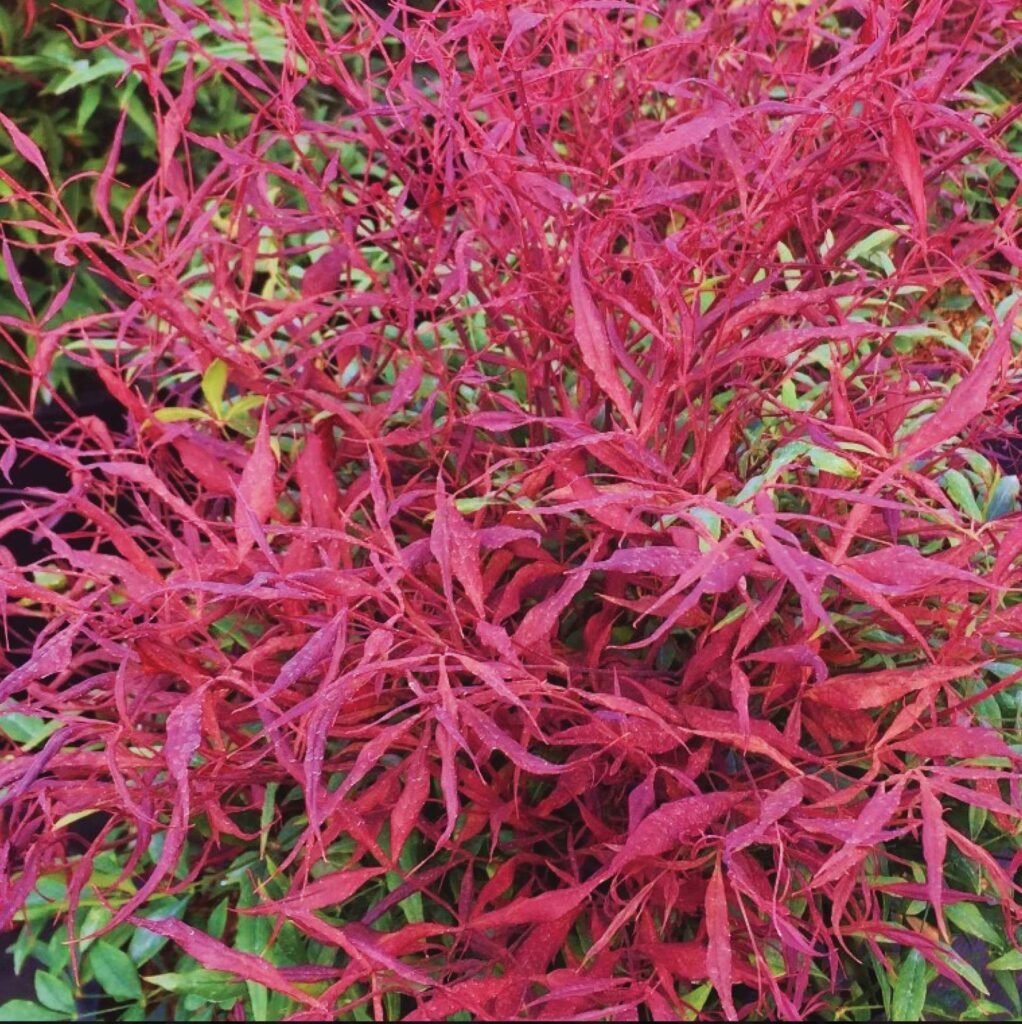
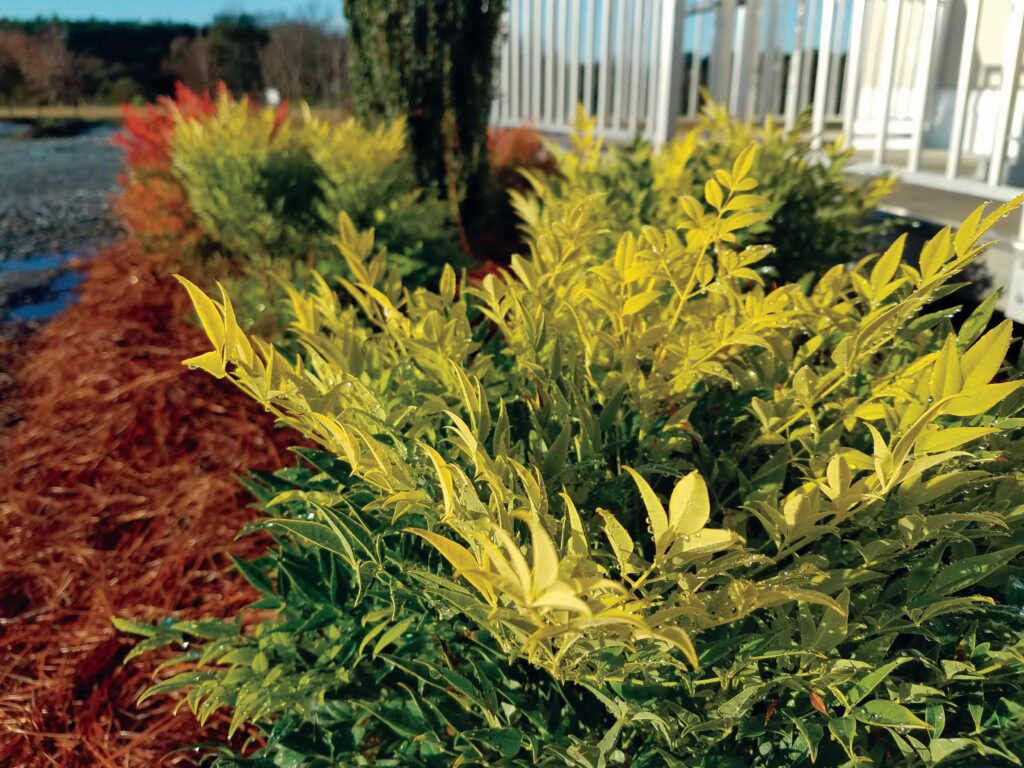
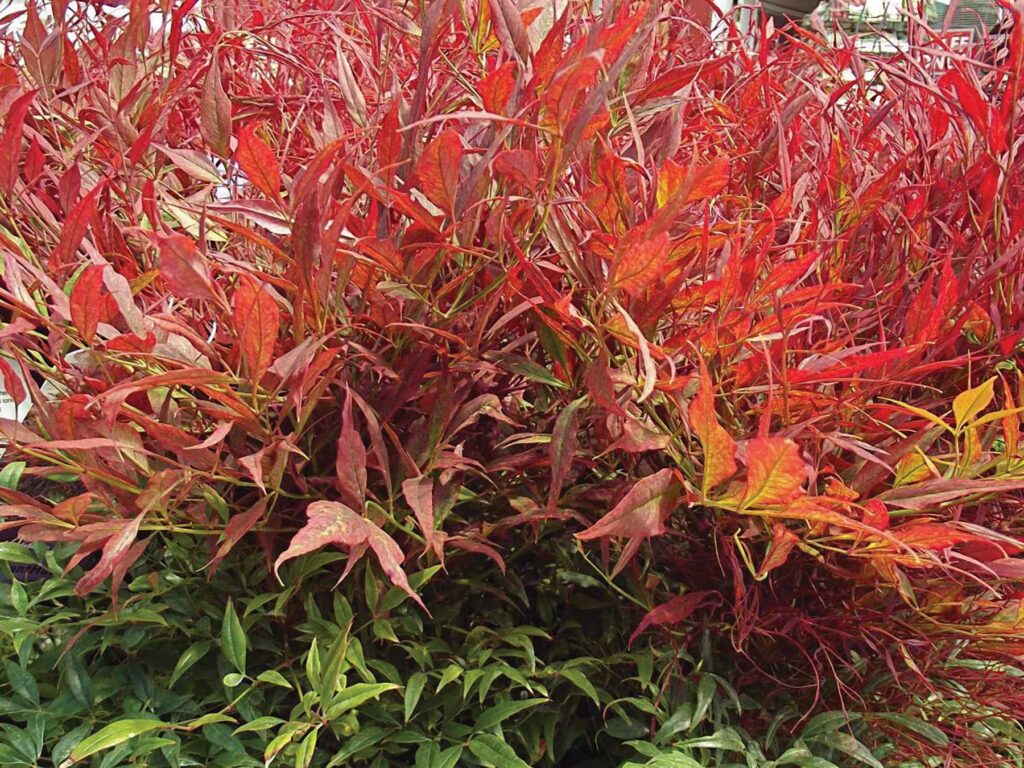
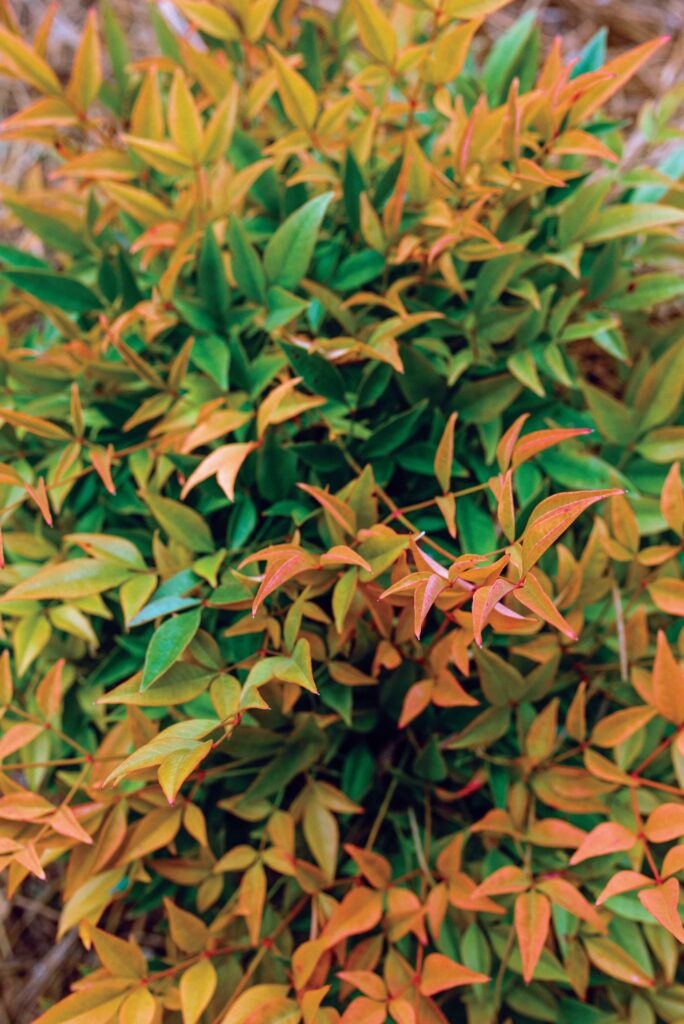
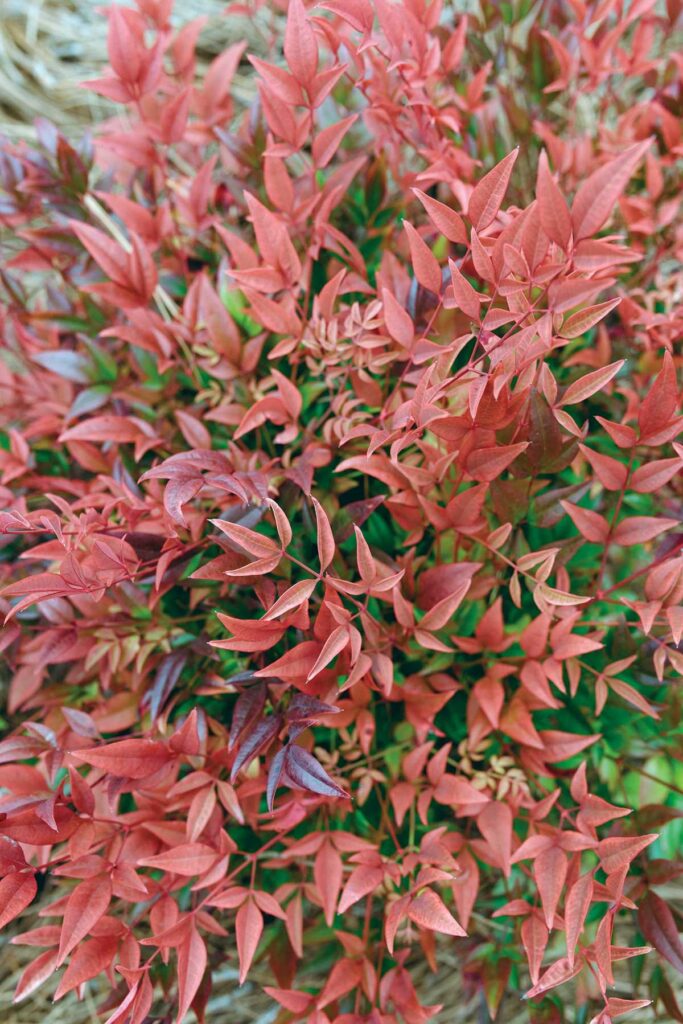
Cultivating colors
Some cultivars of Nandina have been designated as invasive in certain states, as some of the plants have a tendency to spread and crowd out native species.
These characteristics, along with a desire to come up with even bolder colors, have led to the creation of hundreds of Nandina. The UA Campus Arboretum notes that at one time, there were more than 200 cultivars developed in Japan alone.
Lonnee said wholesaler Bailey Nursery and its breeding arm, Bailey Innovations, have worked with breeders in North America and around the world on a range of new cultivars. The nursery worked closely with breeders at the University of Georgia to introduce three popular ones as part of its First Editions collection of licensed plants: Cool Glow®, Cool Glow® Peach and Cool Glow® Lime.
In addition to their unique colors, the Peach and Lime cultivars are described as having “lacy dark green foliage that is incredibly attractive throughout the year with a compact habit and spare seed set,” the latter attribute meaning they don’t spread as much as some others might. All three also grow well in a range of soil types, including dry conditions, which has made them especially popular in the South.
“I was born and raised in Minnesota, and we don’t grow that many broadleaf evergreens there,” Lonnee said. “In the South, that’s what gardeners want in their landscape. They want foliage all year long. That’s exactly what Nandina gives them.”
Kraemer’s Nursery, a wholesale nursery in Mount Angel, Oregon, is licensed to grow Bailey’s First Editions Nandina. It also grows some others, including Tuscan Flame – a drought-tolerant shrub with bright red foliage – and ‘Gulf Stream’, which has foliage that transforms from red in the spring to blue-green in the summer before white flowers appear.

